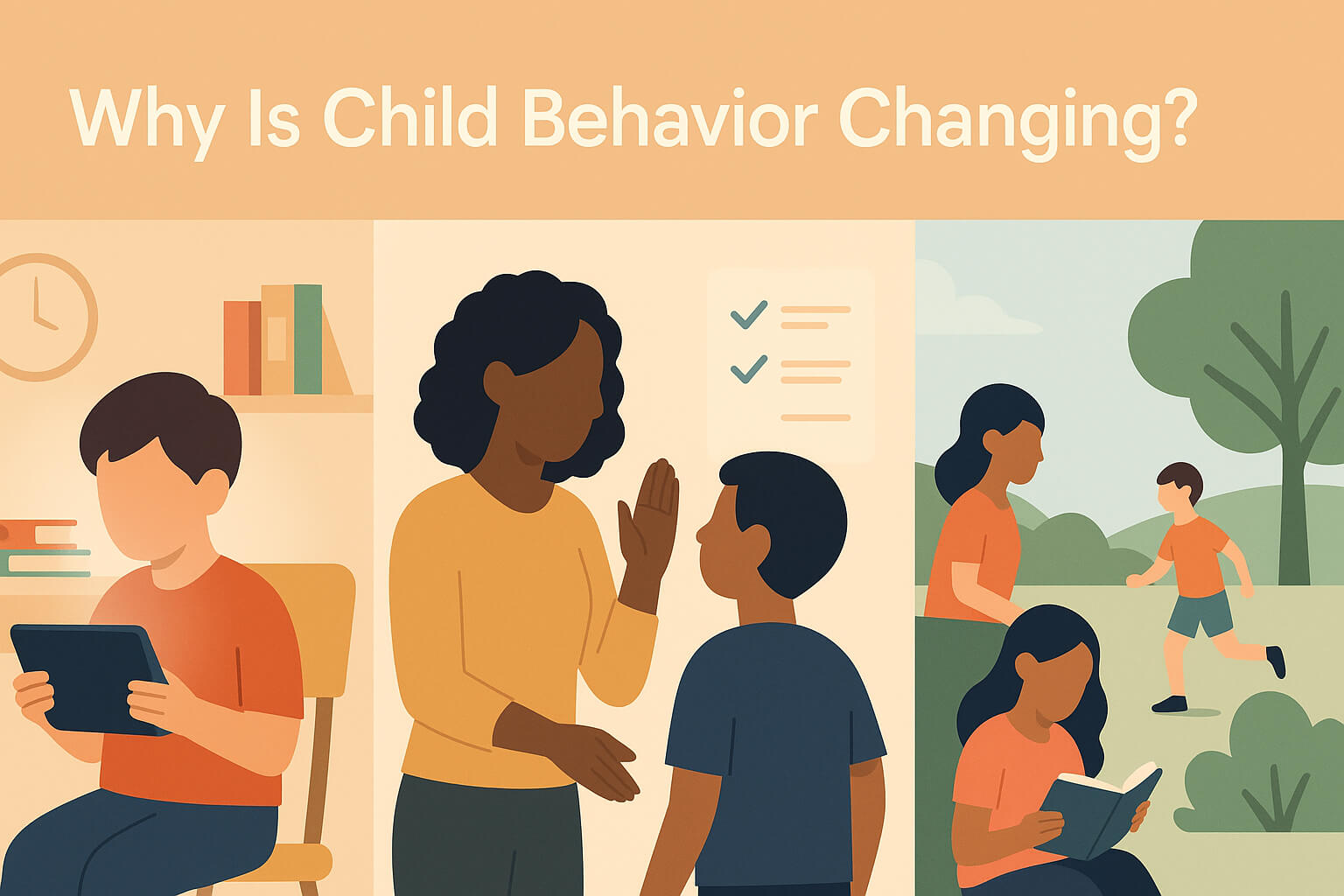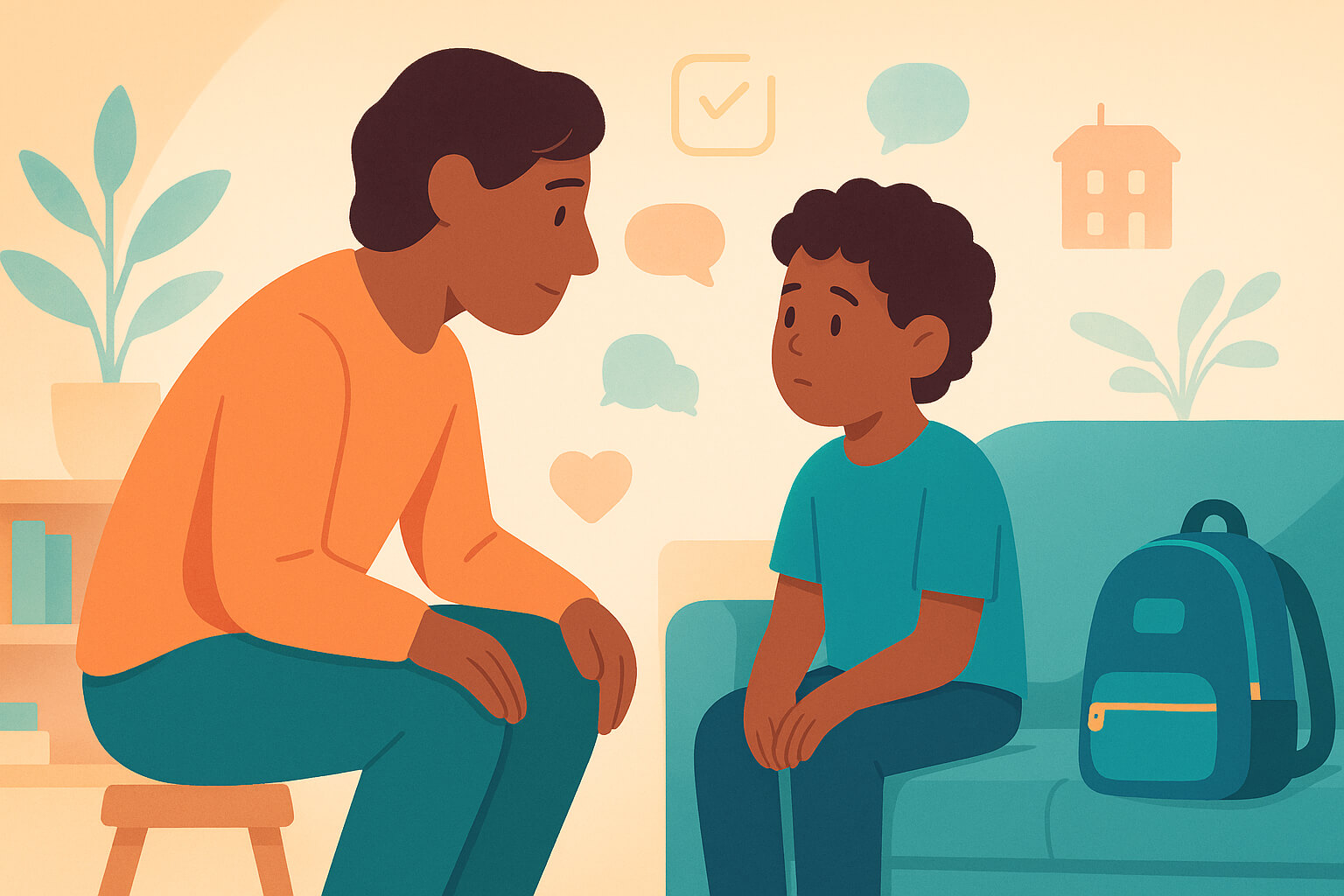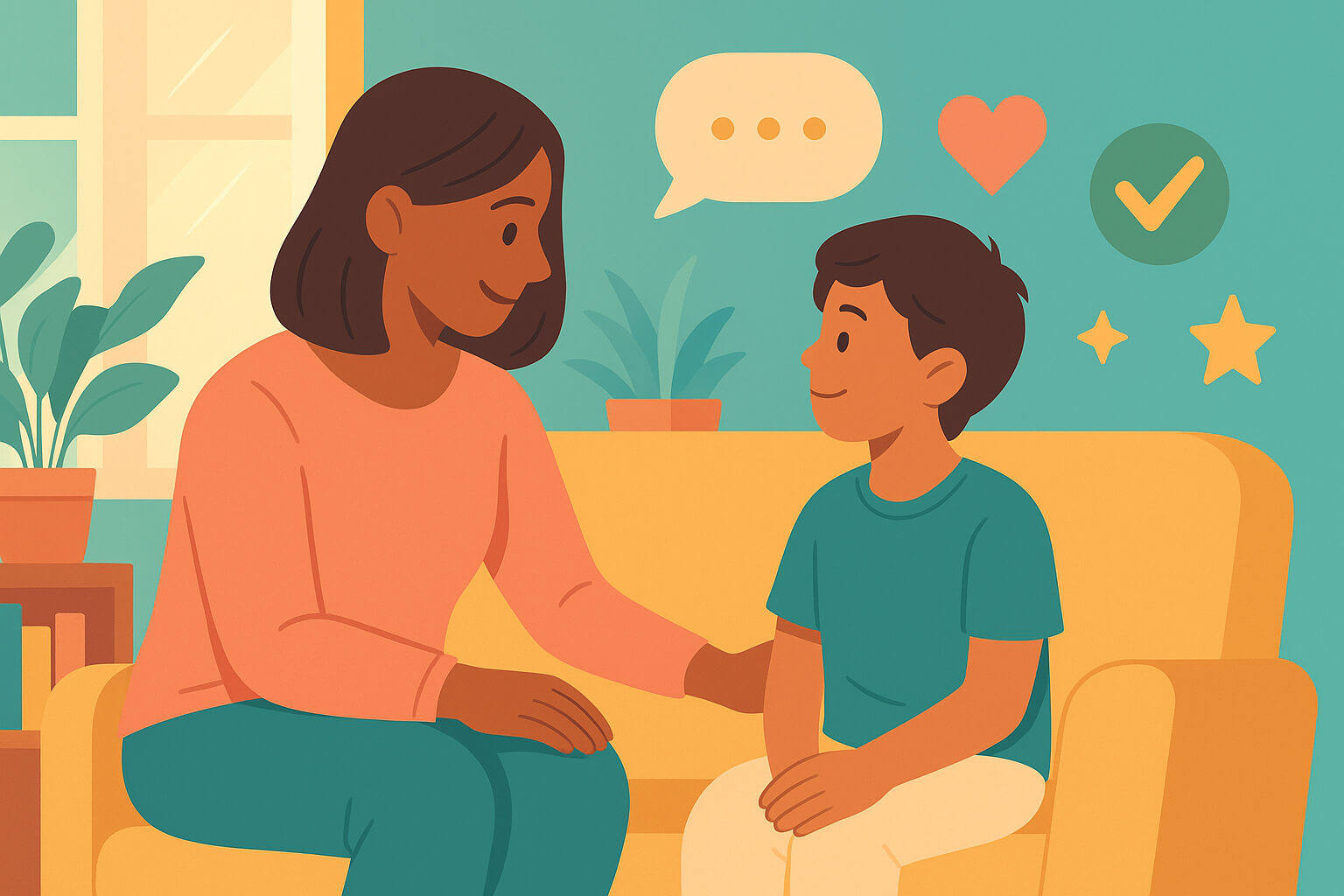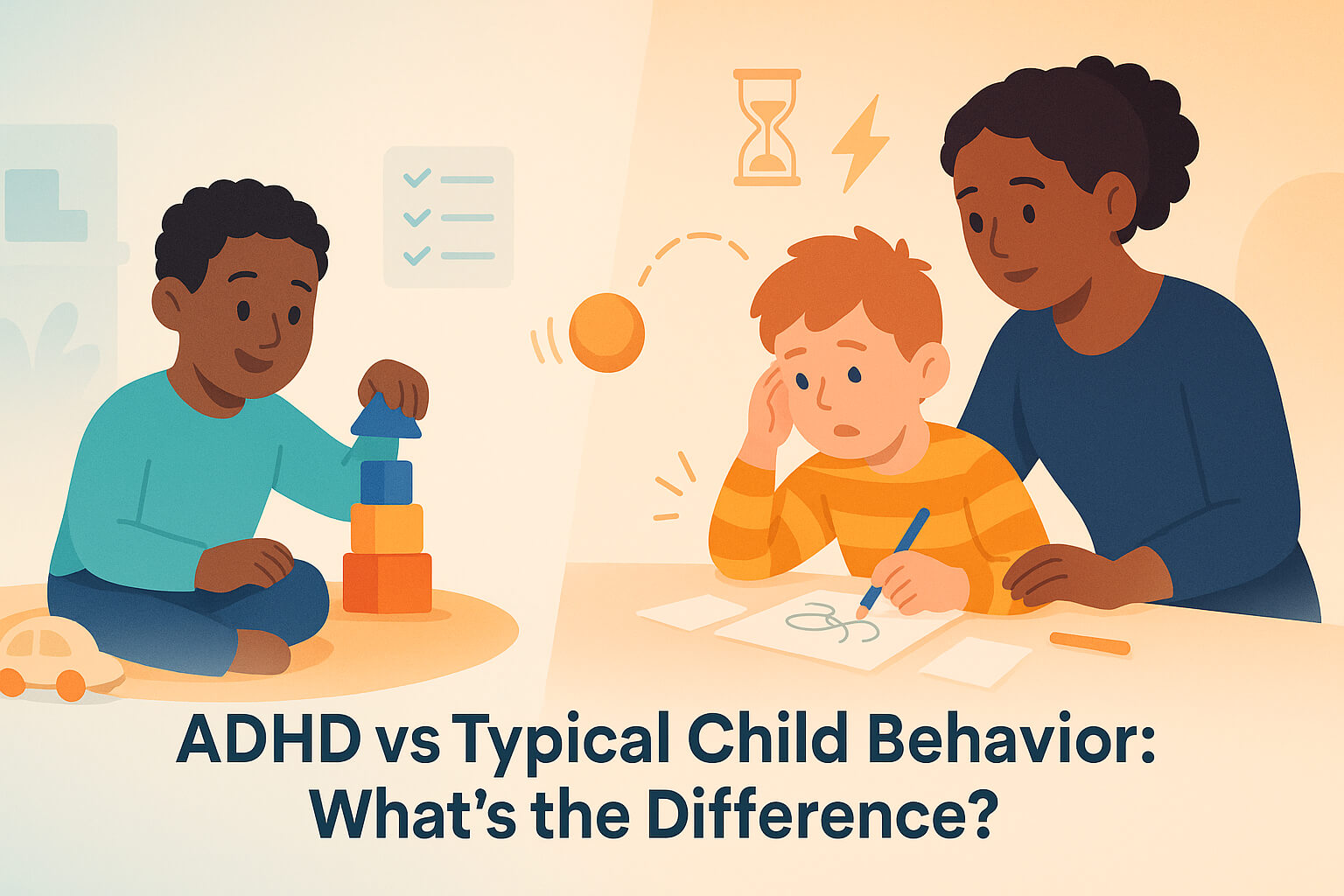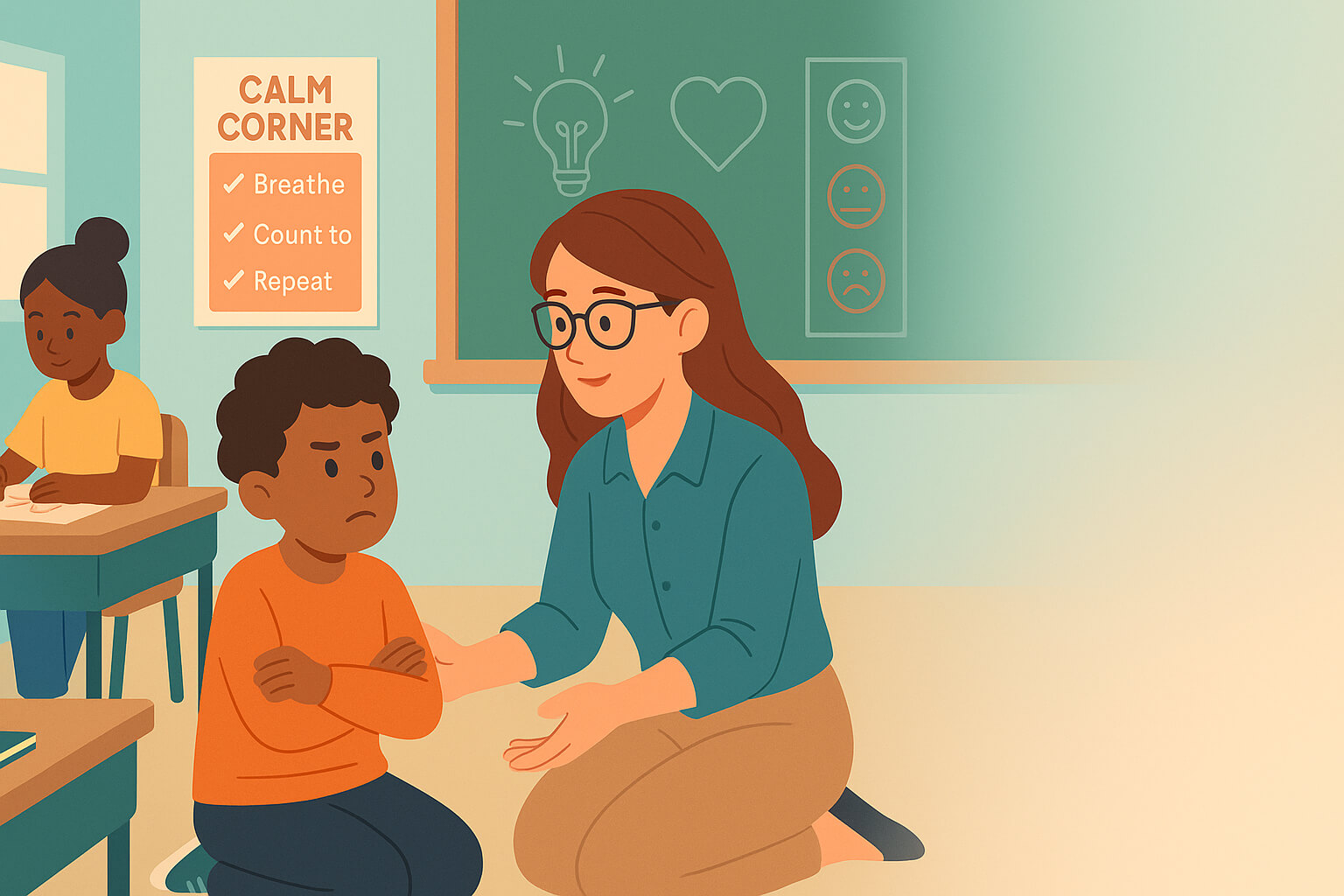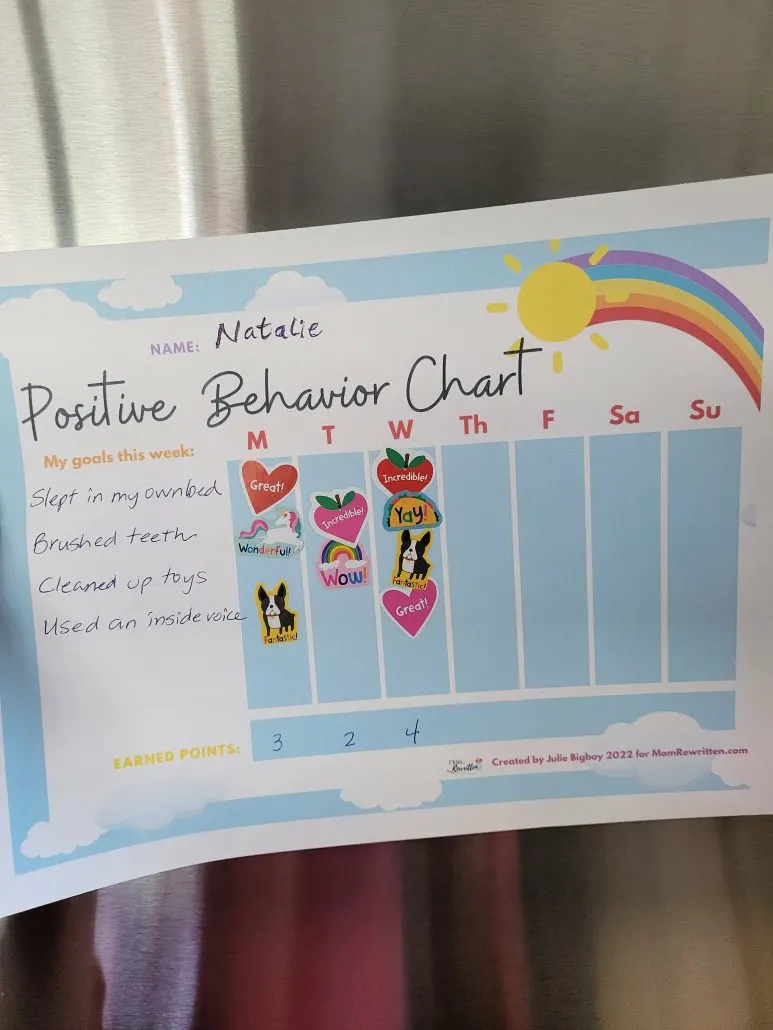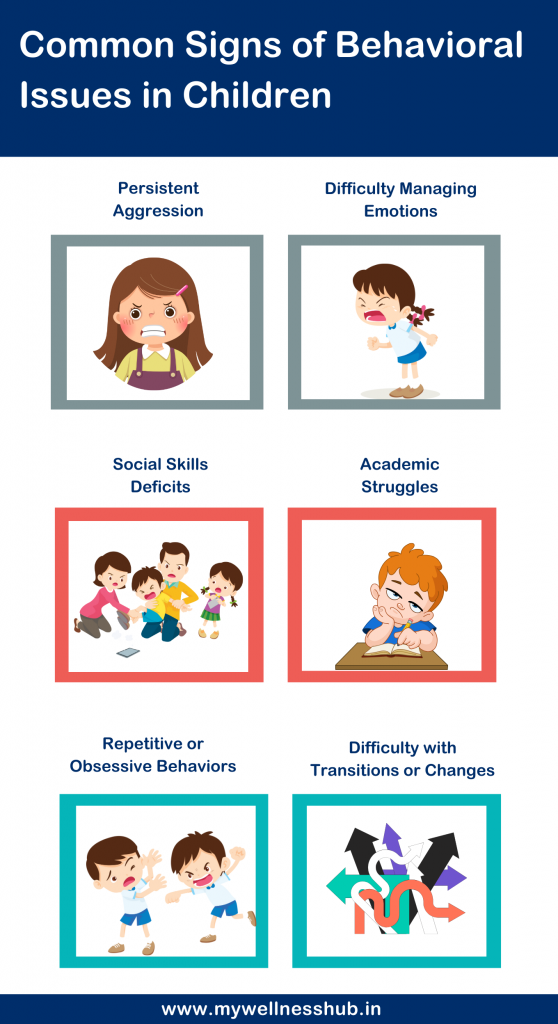Why is Child Behavior Getting Worse Over the Years? Have you ever caught yourself wondering, “What’s happening with kids these days?” Maybe you’ve noticed tantrums that seem bigger, defiance that feels stronger, or an overall shift in how children handle emotions and authority.
It’s not just you. Many parents, teachers, and caregivers are asking the same questions. But here’s the thing—this isn’t just about children. It’s about the environment they’re growing up in, the influences surrounding them, and even the way we, as adults, respond.
Could it be that society is changing faster than kids can adapt? Or are there hidden factors at play that no one’s talking about? If you’ve ever felt frustrated, confused, or even a little helpless when dealing with challenging child behavior, you’re not alone. This article will uncover the reasons behind these changes, break down what’s really going on, and—most importantly—help you understand what you can do about it. Stick with me, because by the time you finish reading, you’ll have a clearer picture and actionable insights that might just change how you see the kids in your life. Let’s dive in.
Shifting Parenting Styles
Parenting styles have shifted significantly over the past few decades. These changes have influenced how children behave and interact with others. Modern parents face challenges that differ from those of previous generations. These shifts have created a noticeable impact on child behavior.
Parents today often approach discipline, communication, and boundaries differently. Some embrace more lenient methods, while others rely heavily on technology. These evolving dynamics shape how children develop their attitudes and responses to the world around them.
Less Structured Boundaries
Many households today have fewer structured rules and routines. Some parents hesitate to enforce strict guidelines, fearing it may harm their child’s confidence. Children without clear boundaries may struggle with self-control and decision-making. Consistent limits help children feel secure and learn respect for others.
Increased Reliance On Technology
Technology now plays a significant role in parenting strategies. Parents often use devices to entertain or calm their children. This reliance can reduce meaningful face-to-face interactions. Limited personal engagement may weaken emotional bonds and social skills in children.
Focus On Friend-like Relationships
Some parents aim to be their child’s friend rather than an authority figure. This approach can blur the lines between guidance and indulgence. Children may struggle to understand accountability without a clear sense of leadership. A balanced relationship fosters both trust and respect.
Pressure To Avoid Conflict
Modern parenting often involves avoiding conflicts to maintain harmony. Parents may give in to demands to prevent tantrums or disagreements. Over time, this can teach children to expect rewards for poor behavior. Setting firm expectations teaches patience and responsibility.
Shift Toward Overprotection
Many parents today lean toward overprotective behaviors to shield their children. While safety is important, excessive control can hinder a child’s independence. Overprotected children may lack resilience and problem-solving skills. Allowing small risks helps them grow stronger and more adaptable.
Impact Of Screen Time
Technology has transformed our lives, but its impact on children’s behavior is something we can’t ignore. Screen time, whether it’s from smartphones, tablets, or TVs, has become a central part of childhood. But is this growing exposure to screens shaping behavior for the worse?
How Excessive Screen Time Affects Emotional Development
Children who spend hours staring at screens often struggle to process emotions. They may become impatient or irritable when asked to put devices down. This happens because screens provide instant gratification, making real-life interactions feel slower and less engaging. For context, pediatric guidance suggests minimizing or avoiding screens (except video chat) before 18 months; for ages 2–5, about 1 hour/day of high-quality content with co-viewing is reasonable; and for ages 6+, set consistent limits that don’t displace sleep, activity, or in-person time (AAP/HealthyChildren, last updated 2023-12-13; AAP Center of Excellence Q&A, updated 2025-05-22).
Think about it: If a child spends more time interacting with a device than with people, how can they learn empathy or manage frustration? Emotional skills develop through face-to-face conversations and shared experiences—not through swiping or scrolling.
Impact On Social Skills
Screen time can reduce opportunities for kids to learn social cues. When kids play video games or watch YouTube alone, they miss out on chances to build relationships. Eye contact, tone of voice, and body language are all essential skills they might not practice enough.
Imagine a child who prefers texting over talking. They might struggle in group settings or feel awkward in face-to-face discussions. Over time, this can affect their ability to connect with peers and form meaningful friendships.
Behavioral Issues Linked To Screen Overload
Ever noticed a child throwing a tantrum when their screen time is cut short? This behavior isn’t uncommon, and it’s often tied to over-reliance on devices. The dopamine rush from games and videos can lead to dependency, making kids crave more screen time.
Parents sometimes use screens as a way to calm children, but this quick fix can backfire. Kids may start associating screens with comfort, leading to meltdowns when devices are unavailable. It’s a cycle that’s hard to break.
How To Take Action
Reducing screen time isn’t about banning devices altogether. It’s about balance and intentional use. Set limits on daily screen time and encourage other activities like reading, playing outside, or doing puzzles.
Make screen-free zones in your home, like the dining table or bedrooms. This gives your child space to interact with family and focus on real-world experiences. Be consistent—your actions will set the tone for your child’s habits. This article is informational and not a substitute for personalized medical advice; consult your pediatrician for guidance specific to your child.
What kind of world do you want your child to grow up in? One dominated by glowing screens, or one rich in human connection? The choices you make today will shape their tomorrow.
Changes In Education Systems
Modern education systems focus heavily on academics, often neglecting emotional growth. Over time, this shift impacts how children behave socially. Reduced face-to-face interaction and reliance on technology also affect attention spans and interpersonal skills.
The education system has undergone significant transformations in recent years. These changes influence how children learn, behave, and develop socially. While modern methods aim to improve learning, they often unintentionally impact behavior.
Less Focus On Discipline
Modern classrooms prioritize academic performance over discipline. Teachers now have less authority to enforce rules. This shift has reduced structured behavioral guidance for students. Children sometimes struggle to understand boundaries without clear consequences.
Overemphasis On Technology
Classrooms today are highly dependent on technology for teaching. Tablets and computers often replace face-to-face interaction. This reduces opportunities for social skill development. Children miss out on learning empathy and collaboration.
Increased Academic Pressure
Students now face higher expectations and standardized testing from an early age. This pressure can lead to stress and frustration. Stressed children are more likely to exhibit disruptive behaviors. They may act out as a coping mechanism.
Reduced Physical Activities
Many schools have shortened recess and physical education time. Physical activity helps children release energy and improve focus. Without it, children often become restless in classrooms. This restlessness can lead to behavioral issues. Public health guidance recommends that children and adolescents ages 6–17 get at least 60 minutes of moderate-to-vigorous physical activity daily (CDC, updated 2024-01-08).
Focus On Individuality
Modern education emphasizes individual expression and self-paced learning. While this fosters creativity, it may reduce teamwork opportunities. Children may struggle to adapt to group settings, leading to conflicts.
Limited Teacher-student Interaction
Larger class sizes mean teachers have less one-on-one time with students. This lack of personal attention can make children feel ignored. They may act out to gain attention from teachers or peers.
Reduced Social Interactions
Limited social interactions are affecting children’s ability to develop essential communication and emotional skills. Isolation from peers can lead to increased behavioral challenges. Reduced opportunities for play and teamwork hinder their ability to manage emotions and build relationships effectively.
Reduced Social Interactions Children today are spending far less time interacting face-to-face with others compared to previous generations. The rise of technology, structured schedules, and even safety concerns have drastically reduced organic playtime and conversations. This shift is impacting the way kids develop essential social skills.
Overreliance On Screens
Screens have become the go-to for both learning and entertainment. While they can be educational, excessive screen time limits opportunities for real-world interactions. A child engrossed in a tablet at dinner is missing out on the chance to learn conversational cues or empathy. Have you noticed how often a group of kids sits together, yet each one is staring at their own device? This disconnect is more common than ever, and it chips away at their ability to bond and resolve conflicts face-to-face.
Decline Of Unstructured Play
Remember when neighborhood kids would gather to play tag or ride bikes until sunset? That kind of spontaneous interaction is fading. Many children today are enrolled in back-to-back structured activities, leaving little room for free play. Unstructured play teaches kids problem-solving, negotiation, and teamwork. Without it, they miss out on learning how to navigate social dynamics on their own.
Parental Fear Of “stranger Danger”
Parents understandably want to protect their kids, but heightened fears about safety can lead to overprotection. Many kids are no longer allowed to roam the neighborhood or make new friends without constant supervision. This well-meaning caution limits their ability to build independence and social confidence. When children don’t interact with peers outside of school, they lose valuable opportunities to learn how to handle different personalities and situations.
The Isolation Of Online Friendships
Online friendships can feel real, but they often lack the depth of in-person connections. A child might have hundreds of “friends” on a gaming platform or social media but still feel lonely. Digital communication misses out on non-verbal cues like facial expressions and body language. These are critical for building emotional intelligence, which is hard to develop when interactions are filtered through a screen.
What Can You Do?
Encourage your child to spend more time with friends in person. Set aside family time where everyone, including you, puts away their devices. Look for local community events or sports leagues to help your child connect with others. Small changes can make a big difference. When your child interacts more in person, they’re not just having fun—they’re also learning how to be a better communicator, problem-solver, and friend.
Influence Of Societal Pressures
Societal pressures have a significant impact on child behavior today. The demands of modern life are shaping how children interact and respond. External factors like technology, peer expectations, and family stress are influencing their development. These pressures can disrupt emotional growth and social skills.
Children are absorbing the stress around them from an early age. Their environments often emphasize competition and achievement. This constant exposure may lead to frustration, anxiety, and behavioral challenges. Understanding these societal effects is key to addressing the worsening behavior trends. For example, in the 2023 U.S. Youth Risk Behavior Survey, 39.7% of high school students reported persistent feelings of sadness or hopelessness, and 77.0% reported using social media several times per day (CDC MMWR, published 2024-10-10).
1. Impact Of Technology Overload
Technology dominates daily life, affecting how children behave and communicate. They spend hours on screens, reducing face-to-face interaction. Overexposure to digital devices can lead to attention problems and impulsive actions. Social media can amplify feelings of inadequacy, causing emotional strain.
Unfiltered online content influences behavior. It exposes children to inappropriate ideas and unrealistic standards. This can lead to imitating negative behaviors or adopting unhealthy coping mechanisms. Setting boundaries around technology use is essential for healthier development.
2. Rising Academic Pressures
Schools often prioritize grades over emotional well-being. Parents and teachers push children to excel academically. This pressure can lead to stress, burnout, and behavioral issues. Some children struggle to cope with constant demands, affecting their mood and actions.
Extra tutoring, tests, and homework can limit free time for relaxation. Without balance, children may feel overwhelmed and disconnected. Encouraging play and creativity can help reduce these pressures and improve behavior.
3. Influence Of Peer Expectations
Peer pressure plays a major role in shaping behavior. Children often feel the need to fit in or impress others. This can lead to risky actions or defiance. Social groups may promote unhealthy habits, affecting mental and emotional health.
Bullying or exclusion can also impact behavior. These experiences often cause anger, sadness, or withdrawal. Teaching resilience and self-confidence can help children navigate peer challenges.
4. Family Stress And Parental Behavior
Family dynamics affect child behavior significantly. Stressful home environments can lead to emotional insecurity. Arguments, financial strain, or neglect can influence how children react. They may express their feelings through aggression or disobedience.
Parental behavior sets an example. Overly strict or lenient parenting can lead to behavioral extremes. Positive communication and consistent boundaries can create a stable environment for children to thrive.
Decline In Mental Health Support
Growing gaps in mental health support leave children without proper guidance during critical development stages. This lack of support contributes to worsening behavior, as emotional challenges remain unaddressed.
The decline in mental health support is impacting children’s behavior. With the growing pressures of modern life, children face more challenges today. Yet, access to mental health services has not kept pace. Many families struggle to find the help they need. This gap leaves emotional struggles untreated, which can worsen behavior over time. Some schools have reduced resources for counselors and psychologists. This limits professional support for students dealing with stress or trauma. Without intervention, children often feel unheard or misunderstood. Their frustration or anxiety may then show up as disruptive behavior.
Lack Of Accessible Services
Mental health services are often too expensive or unavailable. Low-income families face the biggest barriers to support. Rural areas also lack mental health professionals, leaving many without care. Without early help, small problems grow into bigger behavioral issues.
Stigma Around Mental Health
The stigma around mental health prevents many from seeking help. Parents may fear judgment for their child’s struggles. Children, too, may feel ashamed or embarrassed. This silence allows mental health issues to go unaddressed. Over time, untreated problems can lead to more severe behavior issues.
Increased Stress On Families
Modern families face higher stress levels than before. Financial difficulties, work pressures, and busy schedules take a toll. Parents may not have time or energy to focus on their child’s emotional needs. This lack of attention can cause children to act out for connection.
Overloaded School Systems
Schools often lack the resources to address every child’s needs. Teachers and staff are overwhelmed with large class sizes and limited budgets. Without adequate support, children with emotional struggles may feel left behind. This can lead to frustration and behavioral problems.
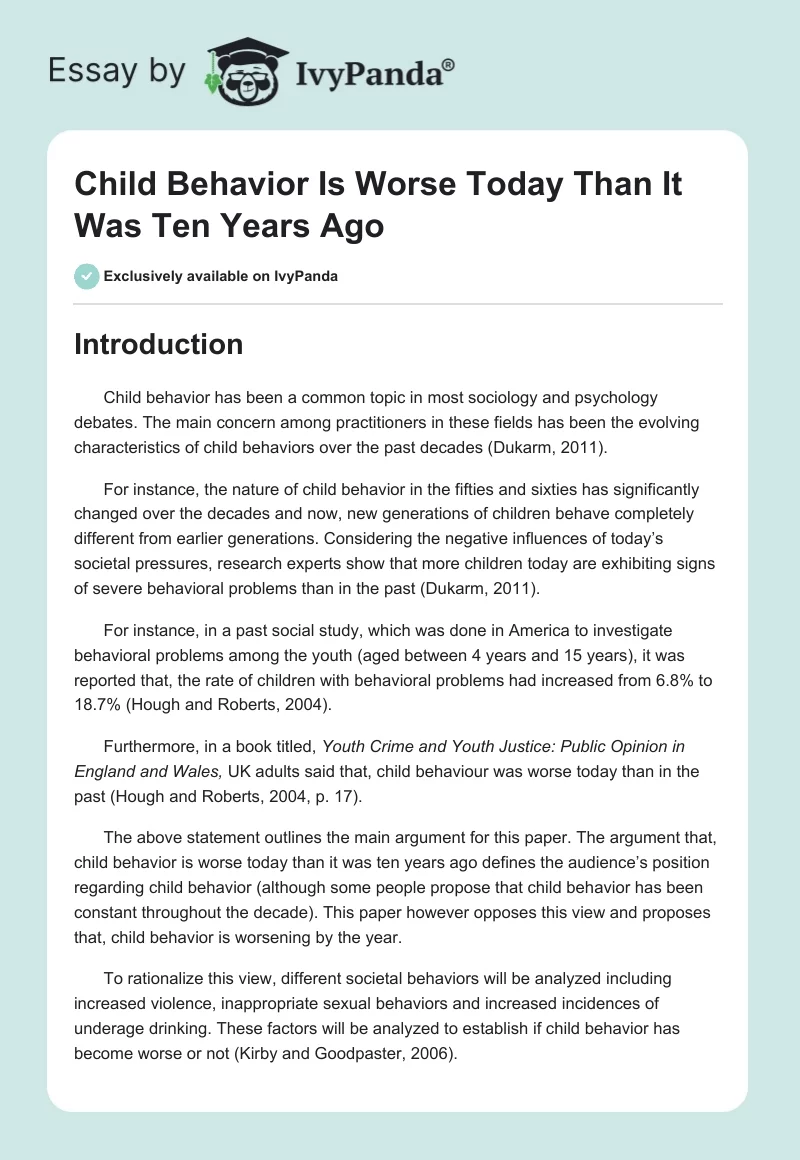
Credit: ivypanda.com
Frequently Asked Questions
Why Does My Child Have Bad Behavior All The Sudden?
Sudden bad behavior in children may stem from stress, changes in routine, lack of sleep, or unmet emotional needs. Consider recent events like school issues, health problems, or conflicts. Emotional or developmental changes can also contribute. Observing patterns and open communication can help identify and address the cause effectively.
What Are The Hardest Years Of Raising Kids?
The hardest years of raising kids are often infancy and adolescence. Infants require constant care, while teens face emotional challenges.
Why Do So Many Kids Have Issues Now?
Kids face more issues today due to increased screen time, academic pressure, reduced outdoor activities, and mental health awareness. Changing family dynamics, social media influence, and environmental factors also contribute. Early diagnosis and open discussions highlight these challenges, making them more visible.
Nurturing environments can help address these concerns effectively.
What Are 5 Factors That Might Influence A Child’s Behavior?
1. Parenting style plays a key role in shaping a child’s behavior. 2. Peer influence can affect how children act and respond. 3. Emotional well-being impacts their actions and reactions. 4. School environment influences their social and academic behavior. 5. Family dynamics strongly affect their development and behavior patterns.
Conclusion
Child behavior challenges reflect changes in society, parenting, and technology use. Families face increased pressures, leaving less time for bonding and guidance. Screen time has replaced outdoor play, impacting social skills and patience. Discipline styles have shifted, creating confusion for children about boundaries.
Addressing these issues requires understanding, consistency, and open communication. Parents, educators, and communities must work together to support positive growth. Small changes in daily routines can make a big difference. Building strong connections with children helps nurture better behavior over time.
A united effort can create a healthier, more balanced environment for future generations.
